#cardiac emergencies
Explore tagged Tumblr posts
Text
Cardiac Emergencies: Recognizing and Responding to Heart Attack and Stroke
Cardiac emergencies, such as heart attacks and strokes, require immediate attention and prompt action. In this blog, we shed light on the signs, symptoms, and appropriate responses to these life-threatening events. We also highlight the crucial role of heart specialists and cardiologists in Indore, as their expertise is instrumental in providing timely and effective care.
Recognizing the Symptoms
Understanding the symptoms of a heart attack or stroke is essential for quick identification and response. We delve into the common signs, including chest pain, shortness of breath, dizziness, weakness, and sudden numbness or paralysis. By recognizing these symptoms early on, you can take immediate action and potentially save a life.
The Importance of Prompt Action
Time is of the essence during cardiac emergencies. We emphasize the significance of calling emergency services immediately when symptoms arise. Early intervention can significantly improve outcomes, as medical professionals are equipped to provide essential treatments, such as administering clot-busting medications or performing life-saving procedures.
Seeking Specialized Care in Indore
In the event of a cardiac emergency, it is crucial to have access to qualified medical professionals, including heart specialists and cardiologists. We highlight the expertise of heart specialists in Indore, who are well-versed in diagnosing and treating cardiovascular conditions. They possess the knowledge and skills to guide patients through the recovery process and provide ongoing cardiac care.
Preventing Cardiac Emergencies
While recognizing and responding to cardiac emergencies is vital, adopting preventive measures can significantly reduce the risk of such events. We discuss lifestyle modifications, including a heart-healthy diet, regular exercise, stress management, and routine check-ups, which can contribute to a healthier heart and a lower risk of cardiac emergencies.
Conclusion
Cardiac emergencies demand swift action and specialized care. By understanding the symptoms and seeking immediate medical attention, individuals can increase the chances of a positive outcome. In Indore, heart specialists and cardiologists play a crucial role in providing comprehensive cardiac care. By raising awareness about cardiac emergencies and the importance of timely response, we strive to empower individuals to prioritize their heart health and potentially save lives.
Original Source: https://vonehospital.blogspot.com/2023/06/cardiac-emergencies-recognizing-and.html
0 notes
Text
I Don't Feel So Good
Warnings: captivity, restraints, torture, electrocution, rescue, hospital, cardiac arrest, cpr, unclear character status, forced to watch
"I....I don't feel so good, C-C-Caretaker," Whumpee said as they slumped over in their chair. "D-D-Dizzy."
"It's ok, Whumpee. Help is here. Hold on. Just hold on," Caretaker said, wishing they could slip the cuffs that kept them away from Whumpee.
Time passed strangely for Caretaker. It seemed as though time had frozen when Whumper was in the room with them. But then time passed swiftly when Whumper had left them alone for an hour. And now, time seemed distorted, speeding up and slowing down. It had been torture watching Whumper spend the last hour shocking Whumpee with the car battery. And now that help had arrived, the waiting was torture.
Whumper had rushed from the room, leaving Whumpee still hooked up to the battery, when the sound of a door giving way startled the three of them. "Help is here, Whumpee. We're saved. Help is here."
Caretaker repeated it over and over as they watched Whumpee struggle to breathe. They opened their mouth to say something, but a group of people rushed into the room. Time seemed to jump for Caretaker, the rescuer's movements disjointed and fast. Before Caretaker could say much, they found themself in the back of an ambulance with Whumpee, rushing to the emergency room.
Whumpee lay on the gurney, their face pale and drawn with pain. The paramedic quickly hooked Whumpee up to various leads and monitors. Caretaker squeezed Whumpee's hand tightly. "You're going to be ok. They're taking us to get you checked out, you're going to be ok." Time was slow in the ambulance. Time was too slow. Whumpee needed help. But the ambulance seemed frozen in time for Caretaker.
A monitor screamed a warning and the paramedic looked up. They called to their partner, "They're in V-Fib. I'm going to defibrillate."
Caretaker's heart began to pound. Whumpee was getting worse. "Please, stay with me, Whumpee."
"I need you to step back, Caretaker," the paramedic said as they attached the sticky patches to Whumpee's chest. "Let me take care of them."
Whumpee's eyes frantically searched for Caretaker's as Caretaker pulled away. "I'm right here. You're going to be ok, Whumpee. You're going to be ok."
The paramedic took the paddles and paused before placing them on Whumpee's chest. "Whumpee, I know you're not feeling very good right now. This isn't going to feel great either. But your heart is beating in a rhythm that isn't good or sustainable. I'm going to try and shock you back into the correct rhythm."
Whumpee nodded their understanding, though their eyes were beginning to get hazy.
"Stay with me, Whumpee. You're going to be ok," Caretaker murmured as they started to reach for Whumpee again.
"Clear!" The paramedic said as they pressed the paddles to Whumpee's chest. Caretaker quickly yanked their hand back to avoid being shocked.
Whumpee's body convulsed with the shock. The paramedic watched the monitor. "I'm going to shock you again, Whumpee. Your heart rhythm isn't quite where it should be."
Whumpee nodded weakly, blinking their eyes slowly. "Clear!" the paramedic said as they deployed the paddles once more.
Caretaker held their breath as they watched Whumpee's body move. The monitor continued with the same sound, the same warning alarm that Whumpee's heart wasn't cooperating.
"Clear!" the Paramedic said again.
But as they started to deploy the paddles once more, Caretaker's stomach dropped as they heard the monitor let one continuous streak and the line that had been erratic mirroring Whumpee's heart beat became flat.
"Asystole," the paramedic called out, putting the paddles back onto the machine, "starting compressions."
Caretaker couldn't breathe around the terror gripping them as they watched the paramedic begin compressions on Whumpee. Couldn't breathe around the terror gripping them as the ambulance stopped, pulling into a med bay. Couldn't breathe around the terror gripping them as they stared into Whumpee's half lidded, empty eyes.
"Come on, breathe, Whumpee. Breathe, damn it!" The paramedic said as they continued to pound on Whumpee's chest.
Caretaker started to reach out to Whumpee, to take Whumpee's hand in theirs. Started to reach out to beg Whumpee to breathe, to stay with them. Started to reach out to try and bring Whumpee back to them. But as their fingertips brushed Whumpee's, the door to the ambulance swung open and they were swarmed by the medical team.
Whumpee was wheeled away from them before they could say or do anything. Wheeled away with the medic still performing CPR. Wheeled away to somewhere Caretaker couldn't go.
Caretaker began to sob as they realized Whumpee might be gone. Might be gone to somewhere permanently. Might be....dead.
Caretaker jumped as a nurse put a hand on their shoulder. "Caretaker," they said softly, "let's take a look at you."
"They....they need help," Caretaker whispered, unable to say the words that they feared were true.
"Whumpee has a great medical team looking after them. Let's get you looked at and then I can find out how Whumpee's doing, is that ok?"
"Whumpee....Whumpee needs me. Please, they need me. I need them." Caretaker started forward to try and follow, but the nurse's hand on their shoulder made them stop.
"Whumpee has all the medical team they need. You need to be looked at. Let the doctors do their job with Whumpee. And let me help you. Then I'll look in on Whumpee, ok?" Their voice was calm and soothing.
But Caretaker didn't want to be soothed. Whumpee had been hurt because of them. Had continued to be hurt because of them. They hadn't been able to do anything to help Whumpee. Hadn't been able to get help, escape, or save Whumpee.
And now....And now, Whumpee's heart had stopped beating. Whumpee was.....dead.
"Please, they can't die. Please. Don't let them die," Caretaker said, tears streaming down their face.
"We won't let them die, Caretaker. We're working on bringing them back. Now let's take a look to make sure you're ok."
#serickswrites#whump#whumpblr#whump writing#whump community#tw captivity#tw restraints#tw torture#tw electrocution#rescue#tw hospital#tw cardiac arrest#tw cpr#tw unclear character status#tw forced to watch#june of doom#june of doom 2024#day 30#prompt: shock#prompt: emergency room#queue
108 notes
·
View notes
Text
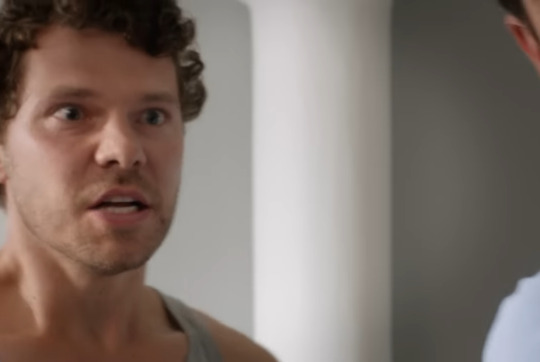


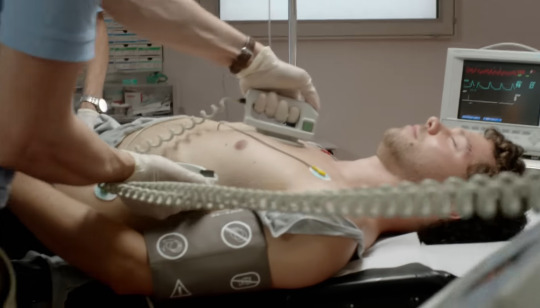
this man has a heart condition and collapsed during a fight with his friend inside the emergency room. he went into v-fib and was revived after a shock of defib.
#cpr#resus#resuscitation#defib#ecg#chest compressions#cpr resus#defibrillator#heart attack#cardiac arrest#emergency room
95 notes
·
View notes
Text
if i died right this moment i would haunt this planet and my unfinished business would be seeing buddie go canon
#yes this is about the episode name drops. yes i am having a cardiac arrest over this. yes this is my emergency#911#buddie
15 notes
·
View notes
Text
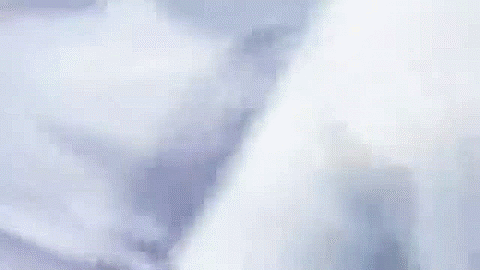
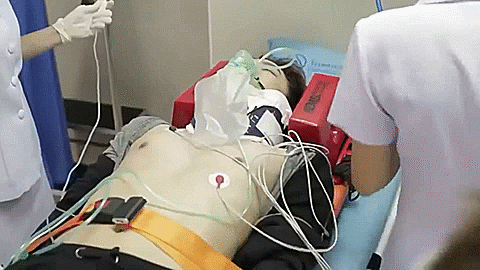
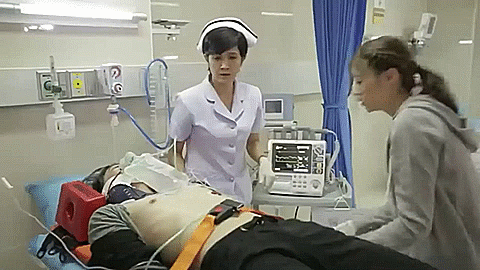
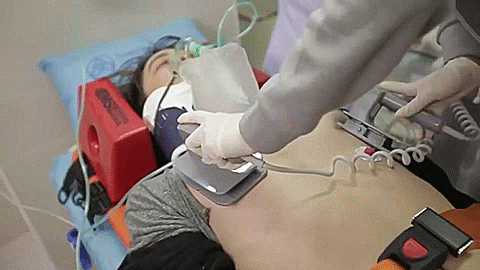

Kam Pood Tee Hai Pai - Ep. 1
Requested by @applesakura
#kam pood tee hai pai#thai drama#hospital#neck brace#oxygen mask#unconscious#emergency room#cardiac arrest#cpr#defibrillation#blurred vision#golf pichaya#gypsy keetari#whump#thai whump#asian whump
122 notes
·
View notes
Text
so a crisis happened this morning, and my cousin who i’m very close to had a health scare that seemed pretty serious. i abruptly announced that i was going on hiatus from here. i thought for sure i’d be offline for the rest of the week because of the situation. it turned out to be a false alarm! everything appears to be okay, things should be going back to their regularly scheduled programming, unless life throws another curveball at me 🤫
#as soon as i opened my damn eyes at 6 in the morning i looked at my phone and saw an emergency text and was like#well shit#but thankfully she’s fine. it was a case of my insane aunt over dramatizing the situation#she literally said my cousin was in cardiac arrest when she wasn’t. not even close 💀
21 notes
·
View notes
Text
Doctor 1: What’s the best antiarrhythmic for venticular tachycardia?
Doctor 2: Propofol, fentanyl and 200 Joules.
80 notes
·
View notes
Text
by the way there is data behind this. there are worse outcomes at night. Across the board. At all hospital levels. Which is. Well. If you’re dying try to do it during business hours.
#I’m being facetious but this is also true#a big part of it is staffing#both from the perspective that usually the best and most experienced people#both on nursing and MD side#don’t work night shift or work it rarely#because there are way less people on.#if you need any consultant you can call but it’s often a putting out fires situation#and most sub specialists take call from home. so they only come in for truly emergent cases#and even then. it times time to organize a team and get an OR up and running#that’s why trauma centers stroke centers and cardiac centers MUST have full staffing of those teams at all times#and I shouldn’t even complain because some hospitals don’t have#doctors at ALL overnight#I have me the trauma surgeon the ER docs and I guess the hospitalist or whatever#which is still better than uhhh. no one. so. 🤷♀️#there’s a dude with vocal cord paralysis in the icu right now#who needs a surgical tracheostomy for safety and is being watched in the icu#and every night it’s been: hey. if he has respiratory failure. just have the trauma surgeon at bedside for a cric#and the patient is mad because ‘why don’t they just do the surgery?!’#good question. I too hope your airway doesn’t close up.#there is also a worse mortality rate in July in academic hospitals when new trainees start#so don’t get sick in summer months or at night and DEF not on a holiday 👍
3 notes
·
View notes
Text
seeing stuff about the pitt (the show) in the wild is so silly to me after having gone to pitt (the school) cause like wdym they’re at a hospital that’s not a upmc hospital did u know upmc is the biggest employer in pennsylvania there’s like a bajillion upmc hospitals in pittsburgh alone idk what the actual number is and i’m avoiding looking it up but anyways
#there’s a hill on pitt campus lovingly nicknamed cardiac hill cause it’s steep as shit and there’s a hospital on the hill#which is funny to Me cause me and my friends used to joke about making a zip line down to the bottom of the hill#or sending it on a skateboard#and the justification was that the emergency room was Right There
2 notes
·
View notes
Text
youtube
How to Reactivate Heartbeat and Breath ? | Dr. Bharadwaz | Dr. RanjithKumar
Program
Health Authentic
true health information
Expert | Latest | Honest
About Video :
Cardiopulmonary Resuscitation (CPR) is a life-saving technique used in emergencies when someone's heartbeat or breathing has stopped. It involves chest compressions and rescue breaths to maintain circulation and oxygen flow to vital organs until professional help arrives. Key steps include checking responsiveness, calling emergency services, performing chest compressions at a rate of 100-120 per minute and a depth of 2 inches for adults, and using an Automated External Defibrillator (AED) if available. Immediate CPR can double or triple survival chances.
Questions Addressed :
What are the key steps in performing CPR on an adult?
How does the technique for CPR differ between adults, children, and infants?
When should you perform hands-only CPR instead of traditional CPR with rescue breaths?
How do you check for responsiveness and breathing before starting CPR?
What is the recommended compression depth and rate for effective chest compressions?
How do you use an Automated External Defibrillator (AED) during CPR?
What are the potential risks or complications associated with performing CPR?
About Dr. Bharadwaz :
Health and Fitness Speciality
Medicine, Surgery and Homeopathy Doctor
Clinical Research Subject Matter Expert
Guest Dr. RanjithKumar
Qualification : MBBS, MRCEM
Expertise : Emergency Specialist
#CPR #FirstAid #SaveLives #EmergencyResponse #HeartHealth #LearnCPR #BystanderCPR #CPRAwareness #CPRTraining #CardiacArrest #AED #ChestCompressions #LifeSavingSkills #RescueBreaths #EmergencyPreparedness
#HealthAuthentic
#DrBharadwaz #ClingeniousCompany #Helseform #HelseformFitness #Health #Fitness #Fidicus #FidicusHomeopathy #Homeopathy #Medicine #Surgery #Clingenious #ClingeniousResearch #ClinicalResearch #ClinicalInteractiveSystem
#cpr#how to do cpr#basic cpr#damar hamlin#hamlin#buffalo bills player collapse#damar hamlin collapse#cardiopulmonary resuscitation#automated external defibrillator#emergency response#cpr training#aed training#chain of survival#first aid#tutorial#healthsketch#cardiac arrest#resuscitation#cardiopulmonary#local#mornings#news#infant cpr#cpr for infants#baby cpr#cpr for babies#newborn cpr#cpr for newborns#cpr for 1 year old#Youtube
2 notes
·
View notes
Text
Star Hospitals Hyderabad – Your Trusted Healthcare Partner
When it comes to premium medical care in Hyderabad, Star Hospitals is a name synonymous with excellence. With world-class facilities and a team of top medical specialists, we provide comprehensive treatment solutions for a wide range of conditions. Whether you need a neurologist in Hyderabad, a top nephrologist, orthopedic specialist, or gastroenterologist, our multidisciplinary approach ensures advanced healthcare tailored to your needs.
Expert Neurology Care – Best Neurologists in Hyderabad
Star Hospitals offers cutting-edge neurology treatments led by some of the best neurologists in Hyderabad. Our specialists diagnose and treat a variety of conditions, including stroke, epilepsy, multiple sclerosis, and neurodegenerative disorders. With the latest in neuroimaging and intervention techniques, we provide patients with personalized treatment plans for long-term well-being.
Nephrology Excellence – Best Nephrologists & Top Kidney Care in Hyderabad
Renowned for its kidney care expertise, Star Hospitals is home to the best nephrologist in Hyderabad. Our team specializes in chronic kidney disease management, dialysis care, kidney transplants, and hypertension-related renal disorders. With state-of-the-art diagnostic tools and innovative therapies, we ensure optimal renal health for our patients.
Advanced Orthopedic Solutions – Best Orthopedic Doctor & Robotic Knee Replacement in Hyderabad
If joint pain is limiting your movement, Star Hospitals offers the best orthopedic doctors in Hyderabad, skilled in sports injuries, arthritis treatment, joint replacement surgeries, and minimally invasive procedures. Our robotic knee replacement surgery in Hyderabad ensures precision, quicker recovery, and improved mobility, providing patients with the highest quality orthopedic care.
Cardiology at Its Best – Best Cardiologist & Cardiac Emergency Care in Hyderabad
At Star Hospitals, our best cardiologists in Hyderabad specialize in preventive heart care, angioplasty, bypass surgery, and heart rhythm disorders. In case of a cardiac arrest emergency treatment hyderabad, our Hyderabad facility is equipped with advanced cardiac life support systems to provide immediate and life-saving treatments for critical heart conditions.
Gastroenterology & Digestive Health – Best Gastroenterologists in Hyderabad
For those suffering from digestive disorders, our best gastroenterologist in Hyderabad offer specialized care for GERD, liver diseases, irritable bowel syndrome, and digestive cancers. With advanced endoscopic procedures and minimally invasive treatments, our hospital is a leading center for gastroenterological excellence.
Cosmetic & Reconstructive Surgery – Best Cosmetic & Face Surgery in Hyderabad
Enhance your confidence with Star Hospitals’ cosmetic surgery in Hyderabad. Our experienced plastic surgeons offer a range of procedures, including face surgery in hyderabad, rhinoplasty, liposuction, and aesthetic enhancements. Using the latest techniques, we focus on natural, refined, and lasting results to help you achieve your desired look.
Expert Dermatology Services – Best Dermatologist in Banjara Hills
Healthy skin is a reflection of overall well-being, and our top dermatologists in Banjara Hills provide expert care for acne, pigmentation, skin allergies, and anti-aging treatments. Using advanced laser technology and personalized skincare plans, we help patients achieve clear, healthy, and radiant skin.
Why Choose Star Hospitals Hyderabad?
✅ Multispecialty Expertise – Comprehensive medical services under one roof. ✅ Cutting-Edge Technology – Advanced diagnostics and minimally invasive procedures. ✅ Highly Experienced Specialists – Access to the best doctors across various fields. ✅ 24/7 Emergency Care – Quick and effective treatment during medical emergencies. ✅ Patient-Centric Approach – Personalized care plans to ensure optimal recovery.
📞 Book an Appointment Today! Visit Star Hospitals to schedule a consultation with the best medical experts in Hyderabad. Experience advanced healthcare solutions tailored to your needs.
#neurologist in hyderabad, #top nephrologist in hyderabad, #robotic knee replacement in hyderabad, #best cardiologist in hyderabad, #best gastroenterologist in hyderabad, #cosmetic surgery in hyderabad, #face surgery in hyderabad, #best orthopedic doctor in hyderabad, #cardiac arrest emergency treatment hyderabad, #best nephrologist in hyderabad, #dermatologist in banjara hills
#neurologist in hyderabad#top nephrologist in hyderabad#robotic knee replacement in hyderabad#best cardiologist in hyderabad#best gastroenterologist in hyderabad#cosmetic surgery in hyderabad#face surgery in hyderabad#best orthopedic doctor in hyderabad#cardiac arrest emergency treatment hyderabad#best nephrologist in hyderabad#dermatologist in banjara hills#best hospital in hyderabad#best multispeciality hospital in hyderabad#best hospital near me#best emergency hospital in hyderabad#24 hour hospital near me#emergency hospital near me#emergency hospital hyderabad#emergency care near me#24 hour emergency near me#emergency doctor near me
0 notes
Text
Understanding the Role of Critical Care Teams in ICU Recovery
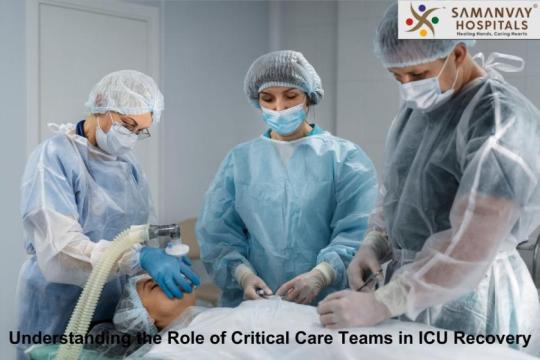
When patients are critically ill or injured, they need specialized care. This is where the critical care team in the Intensive Care Unit (ICU) steps in. The ICU is designed to provide round-the-clock monitoring and treatment. These teams are crucial for improving patient outcomes and helping them recover.
What is a Critical Care Team?
A critical care team is the amalgamation of the most expert medical professionals. The team may comprise doctors, nurses, respiratory therapists, and others. The aim of a particular member is to play their part in recovering a patient, making them stabilize a patient in their care at a critical time with comprehensive treatment.
Key Responsibilities of Critical Care Teams
Critical care teams monitor patients’ vital signs, administer medication, and operate more advanced machinery, such as devices that can detect heart rate, oxygen level, and blood pressure. Furthermore, the team should ensure timely intervention to avert further complications from arising in a patient’s case.
Doctors in the ICU monitor the condition of the patient. They will change the treatment plan if there is a reaction from the patient. Moreover, the nurses consult with doctors regarding the progress of the patient.
Importance of Specialized ICU Care
In an ICU, every patient is different in their condition. The critical care team is well prepared to take on a myriad of medical emergencies. They can treat each patient uniquely according to his or her needs. For instance, when a patient is diagnosed with respiratory failure, the respiratory therapist is involved in aiding him or her in breathing treatment.
Besides the recovery in terms of the body, it is also not restricted to physical care. It encompasses emotional and mental health recovery as well. The critical care team communicates with the patient’s family members to update them on their condition and to allay fears.
How Critical Care Teams Assist in ICU Recovery?
Critical care teams play a pivotal role in a patient’s recovery. They stabilize patients and make sure they receive proper treatments at the right time. This is especially important in intensive care units, where patients are at high risk.
For all patients requiring 24×7 emergency ICU services, the critical care team is available round-the-clock. They will respond promptly to changes in the patient’s condition and, therefore, bring timely intervention. Their expertise will also avoid complications and lead to faster recovery.
ICU Services in Baroda: A Great Model
In Baroda, there are the best ICU facilities in various hospitals. State-of-the-art infrastructure and very skilful teams deliver the highest standard of care for patients here. Whether surgery is being recovered from or in a state of emergency, all medical conditions will be handled professionally in Baroda’s critical care departments.
However, the best ICU care Vadodara hospitals ensures that every patient gets individualized treatment. The units are well equipped with the latest technology to monitor patients closely. This way, patients receive constant supervision, which increases chances for recovery.
Coordination Among Team Members
In an intensive care unit hospital, collaboration is the key. Every team member, whether a doctor or a nurse, works together seamlessly. Their combined efforts create a comprehensive care plan for the patient. Moreover, they ensure that the patient’s recovery is on track and intervene when necessary.
As an example, if a patient is having trouble breathing, the respiratory therapist collaborates with doctors. Together, they give appropriate treatments so the patient’s state is stabilized.
Challenges Facing the ICU Team
Despite the advanced technology, recovery in the ICU is challenging. Critical care teams have to constantly adjust treatment plans because patients’ conditions change. Additionally, the emotional toll on patients and their families is significant. The team provides support to families, ensuring they are informed and involved in the recovery process.
However, the high-pressure situation needs to be balanced with calm decision-making. In this regard, ICU teams are always prepared for any emergency and act quickly. This calls for constant training and up-to-date knowledge of medical procedures.
Conclusion
Critical care teams are the cornerstone of recovery from the ICU. They provide focused care to stabilize patients in critically ill conditions. Whether it’s ICU services in Baroda or the best ICU care in Vadodara, these teams provide the best medical care to a patient. Due to their special expertise and devotion, critical care teams play an important role in enhancing patient results in patients who recover faster.
Therefore, when seeking an intensive care unit hospital or 24×7 emergency ICU services, select a facility with experienced and compassionate critical care teams. Their role is crucial in ensuring your loved one receives the best care during difficult times.
#heart hospital in vadodara#best cardiologist in vadodara#urologist in vadodara#top 10 hospitals in vadodara#top 10 multispeciality hospitals in vadodara#multispeciality hospital in baroda#best urologist in vadodara#Internal medicine specialist Baroda#Best ICU care Vadodara#ICU services in Baroda#hernia surgery specialist Baroda#surgery of hernia in vadodara#laparoscopic hernia surgery in vadodara#best urology hospital in vadodara#heart specialist hospital in vadodara#best cardiology doctor in vadodara#best heart hospital in vadodara#top urologist in vadodara#best cardiac surgeon in vadodara#lungs hospital in vadodara#gynecologist hospital in vadodara#general surgery hospital Vadodara#Fissure treatment in Vadodara#best gynecologist in vadodara#24x7 emergency ICU services#orthopedic hospital in Vadodara#Top orthopedic hospital Vadodara#urologist hospital in vadodara
0 notes
Text
0 notes
Text
How to Work as a Nurse in the Intensive Care Unit (ICU)
Becoming a nurse in the Intensive Care Unit (ICU) is not just a career choice; it is a calling. Where healthcare infrastructure is rapidly evolving, ICU nurses are the backbone of critical care services. These professionals are entrusted with saving lives, often under intense pressure, and their expertise plays a pivotal role in the recovery of critically ill patients. If you are passionate about…
#Cardiac#Care#Career opportunities#Critical Care#Demand#Diploma#education#Emergency#emotional support#Experience#growth#healthcare#healthcare professionals#India#Indian Nursing Council#Individual#medication#Medications#Monitoring#nursing#Nursing Care#Nursing Career#opportunities#Patients#Postgraduate#Qualifications#RN#skills#Support#training
0 notes
Text
“And it’s for this 10% percent that we give our all in every cardiac arrest.”
Showing a video greeting of a fully recovered patient.
#medicine#med school#medblr#emergency medicine#cardiac arrest#cpr#cardiopulmonary resuscitation#recovery
29 notes
·
View notes
Text
I'd forgotten that IMSA was also broadcasting the race on youtube, i can watch it from my couch!!!!!
#i've been at my desk for 5 hours agshdkflflg#i can't sleep because my sister isn't doing well and i have to stay up if she needs to talk tonight#(she has pretty bad health problems and she's also been struggling with cardiac issues since getting covid for the ????nth time#except her doctor gave her cortisone for her psorisis arthritis and she now has bradycardia#i made her call the emergency services earlier because she'd eent up and down stairs sat down and her hear rate got down to 49 in a couple#of minutes when she's not fit AT ALL. turns out that cortisone can cause bradycardia if you have heart issues/cardiopathy?????#so the emergency services doctor told her to go see her doctor first thing on monday#bit wouldn't tell her if she should keep taking cortisone or not..#so we thought about it and she's not gonna take it tomorrow and see what the doctor says on monday#she also has to see a cardiologist asap)#anyway. i can't sleep tonight and the couch might not be a good idea
0 notes